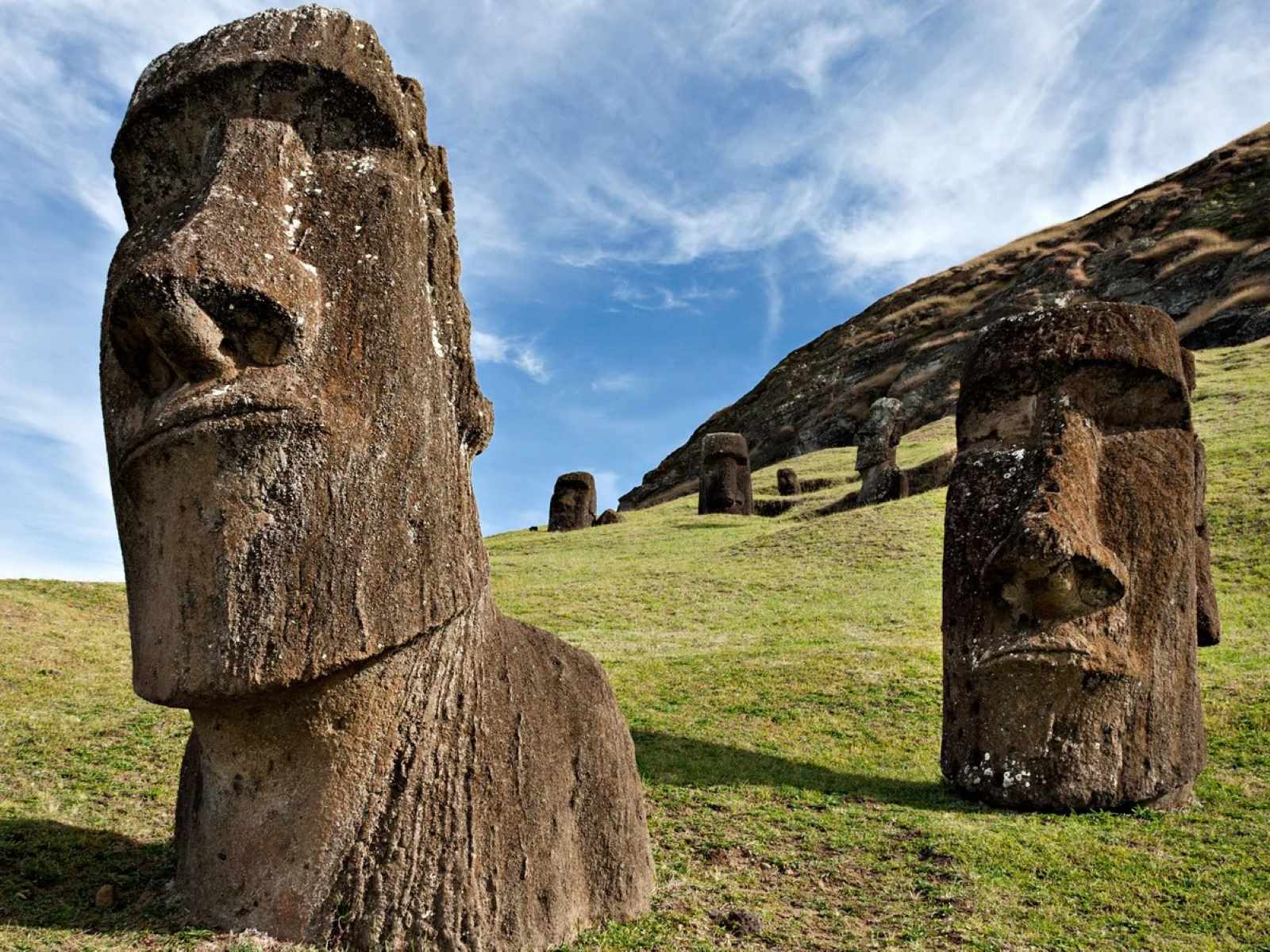Secret Moai Quarry Of Easter Island: Birthplace Of Stone Giants

Ever wondered where the mysterious stone giants of Easter Island come from? The answer lies in the secret Moai quarry of Rano Raraku. This ancient site, hidden on the slopes of a volcanic crater, is where the island's iconic statues were carved. Imagine walking among hundreds of unfinished Moai, each telling a story of a time long past. The quarry offers a unique glimpse into the craftsmanship and culture of the Rapa Nui people. Visiting this site feels like stepping back in time, surrounded by the silent guardians of Easter Island's history. Ready to uncover the secrets of Rano Raraku? Let's dive in!
The Enigmatic Rano Raraku
Rano Raraku, the secret Moai quarry of Easter Island, is where the island's iconic stone giants were born. This volcanic crater served as the primary source of the tuff, a type of volcanic rock, used to carve the Moai statues. Let's explore the fascinating spots within this quarry.
The Quarry Face
- The quarry face is where the magic happened. Here, you can see unfinished Moai still attached to the bedrock, giving a glimpse into the carving process. It's like stepping back in time to witness the ancient artisans at work.
The Moai Cemetery
- Scattered around the slopes of Rano Raraku, the Moai cemetery is a hauntingly beautiful sight. These statues, abandoned during transport, lie in various stages of completion. Some are upright, while others are partially buried, creating an eerie yet captivating landscape.
The Tukuturi Moai
- Unlike other Moai, Tukuturi is unique because it is kneeling. This statue is believed to represent a singer or priest, adding a layer of mystery to its purpose. Its distinct posture sets it apart from the more common standing Moai.
The Carving Process
Understanding how the Moai were carved provides insight into the incredible skills of the Rapa Nui people. The process was labor-intensive and required a deep understanding of the volcanic rock.
The Carving Pits
- These shallow depressions in the ground were used to carve the Moai horizontally. Artisans would outline the statue's shape before chiseling away the excess rock. Visiting these pits offers a tangible connection to the ancient craftsmanship.
The Transport Paths
- Once carved, the Moai had to be transported to their final destinations. The transport paths, marked by deep grooves in the rock, reveal the immense effort required to move these colossal statues. It's a testament to the ingenuity and determination of the Rapa Nui.
The Cultural Significance
The Moai are more than just impressive statues; they hold deep cultural significance for the Rapa Nui people. Each statue represents an ancestor, serving as a link between the living and the spiritual world.
The Ahu Platforms
- These stone platforms, called Ahu, were the final resting places for the Moai. Each Ahu was a sacred site, often used for ceremonies and rituals. The alignment of the Moai on these platforms was crucial, as they faced inland to watch over the villages.
The Pukao
- Some Moai were adorned with Pukao, large cylindrical stones placed on their heads. These "hats" were carved from a different type of volcanic rock and added to the statues' grandeur. The Pukao symbolized status and power, enhancing the Moai's significance.
The Mystery of the Moai
Despite extensive research, many aspects of the Moai remain shrouded in mystery. Theories abound, but the true purpose and methods behind these statues continue to intrigue scholars and visitors alike.
The Eyes of the Moai
- Originally, the Moai had eyes made from coral and obsidian. These eyes were believed to hold spiritual power, bringing the statues to life. The discovery of these eye fragments has sparked much debate about their significance and use.
The Abandoned Moai
- Why were so many Moai left unfinished or abandoned? Some theories suggest resource depletion or social upheaval, while others propose that the statues were intentionally left as offerings. This enigma adds to the allure of Rano Raraku.
The Legacy of Rano Raraku
Rano Raraku is not just a quarry; it's a testament to the ingenuity, artistry, and spiritual beliefs of the Rapa Nui people. The legacy of the Moai continues to captivate and inspire, drawing visitors from around the world to this remote island.
- The Preservation Efforts
- Preserving Rano Raraku and its Moai is crucial for future generations. Ongoing efforts to protect and restore these ancient treasures ensure that the story of Easter Island's stone giants will endure.
The Legacy of the Moai Quarry
The Moai Quarry on Easter Island isn't just a place; it's a window into the past. This site shows the incredible skill and dedication of the Rapa Nui people. They carved these massive stone figures, known as Moai, from volcanic rock, then transported them across the island. Visiting the quarry, you can see unfinished Moai, giving a glimpse into the ancient process. The quarry is a testament to human ingenuity and cultural heritage. It reminds us of the importance of preserving history. Exploring this quarry, you feel a connection to the past and the people who once lived there. The Moai Quarry is a must-see for anyone interested in history, archaeology, or just the wonder of human achievement. It stands as a symbol of the Rapa Nui's enduring legacy.

